Author: Pattie Larson, LVT
What’s the Difference Between a Guinea Pig and a Hamster?
Deciding to bring a small mammal into your home requires much research and consideration to decide what pet makes the most sense for your home. Every pet has specific requirements in care and associated costs to live happy, healthy lives. Both hamsters and guinea pigs make excellent additions to a home, but there are some distinct differences between the two species. In this article, we will take a look at these two animals and point out the differences that you, as a potential pet parent, should be aware of when deciding whether a guinea pig or hamster is a better fit.
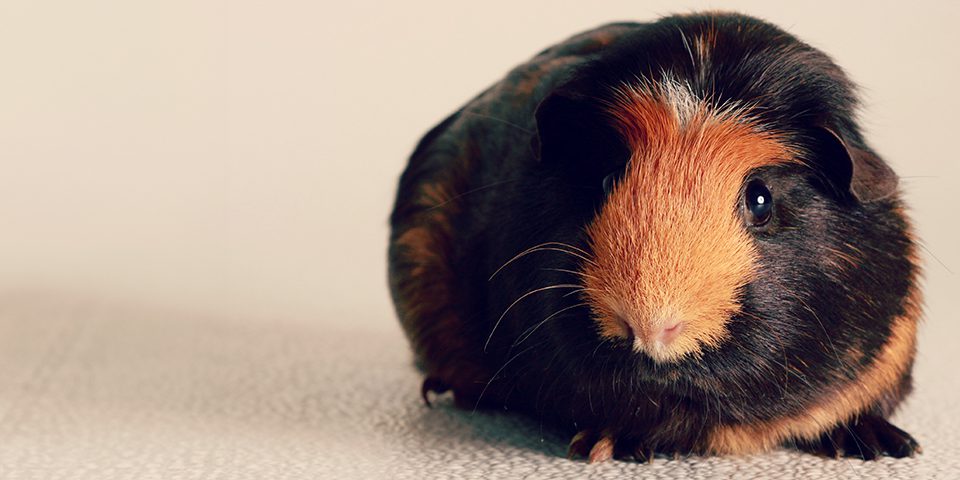
Primary Differences Between Guinea Pigs and Hamsters
Perhaps the most apparent difference between hamsters and guinea pigs, and one that needs careful consideration, is their size and appearance. Hamsters are generally 2-7 inches in length, depending on the breed, and only weigh a few ounces. While many commercial wire cages are small in size, hamsters do best in larger enclosures with a deep layer of bedding for burrowing. Since hamsters are solitary creatures, they need plenty of enrichment opportunities to keep them busy and plentiful opportunities for exercise.
Guinea pigs in comparison are easily twice the size of hamsters at 8-12 inches and can weigh 1-3 lbs. Because guinea pigs are larger, they also require larger habitats. You need to consider how much room you have for a pet no matter what species you’re considering, but guinea pigs generally will require more space than hamsters. Guinea pigs also do better in groups due to their highly social nature, so it is recommended to have more than one guinea pig as long as all guinea pigs in the enclosure belong to the same sex. Keeping more than one animal means offering an even larger enclosure than what you would provide for one animal to keep animals’ stress levels low.
Origins
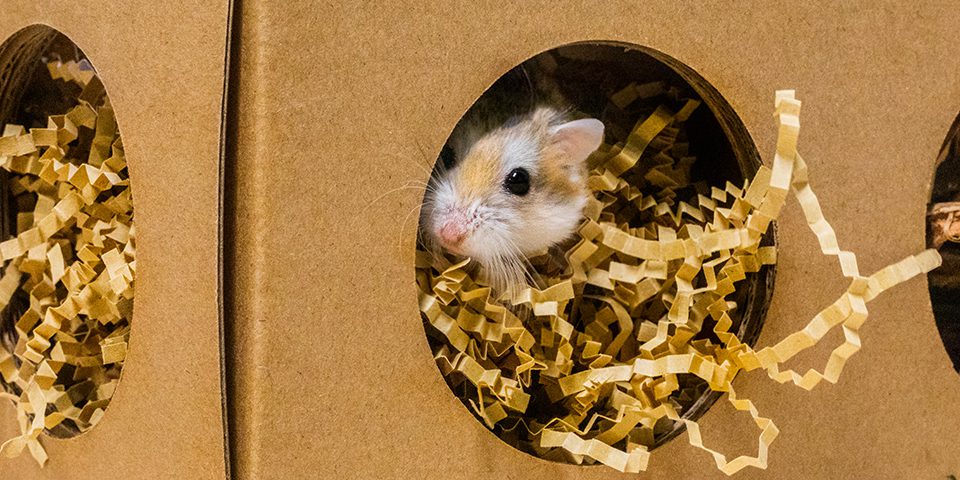
Where do Hamsters Come From?
Did you know that there are 20 different hamster breeds in the world? Some of these are domesticated and kept as pets, while others are quite aggressive and territorial, making them poor pets. Most hamsters originate from Europe and western Asia, sticking to grasslands, meadows, farmland, steppes, dunes, and fields with plenty of grass cover and suitable soil for digging their burrows.
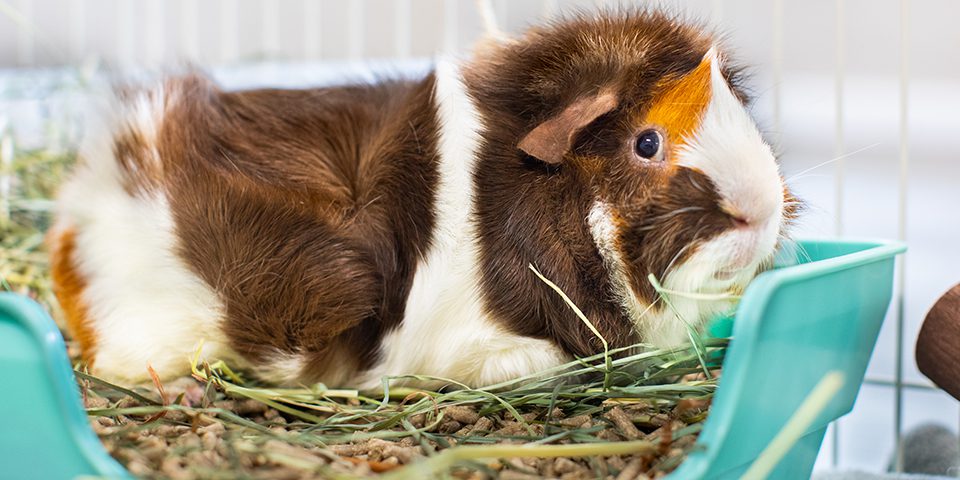
Where do Guinea Pigs Come From?
Guinea pigs originate from South America, particularly in the Andes Mountain range. There are indications that humans living in Ecuador, Peru, Bolivia, and other areas of the Andes began the domestication process of guinea pigs as far back as 5000 BCE as a food source. Guinea pigs also played a role in medicine and religion in some areas, even being worshiped by the Moche civilization in northern Peru (100 CE to 800 CE). Ancient artifacts include guinea pigs on pottery and other artwork, as well as statues created in their likeness. After the Spanish Conquistadors came, the guinea pig became a popular export as an exotic pet among the rich, and they became a highly sought-after addition to the royal courts of Europe starting as early as the 1600s. There are now many different kinds of guinea pig breeds throughout the world.
Can Hamsters and Guinea Pigs Live Together?
Hamsters and guinea pigs are not compatible and should never share the same habitat or enclosure. Hamsters are territorial by nature, which is why they do better as solitary animals that live alone.
Beyond possible territorial disputes and safety concerns, the habitat and dietary needs of the two species are very different. Hamsters need a deep amount of bedding for burrowing, while guinea pigs prefer to stay above ground and hide in hideouts that they can quickly dash into if startled.
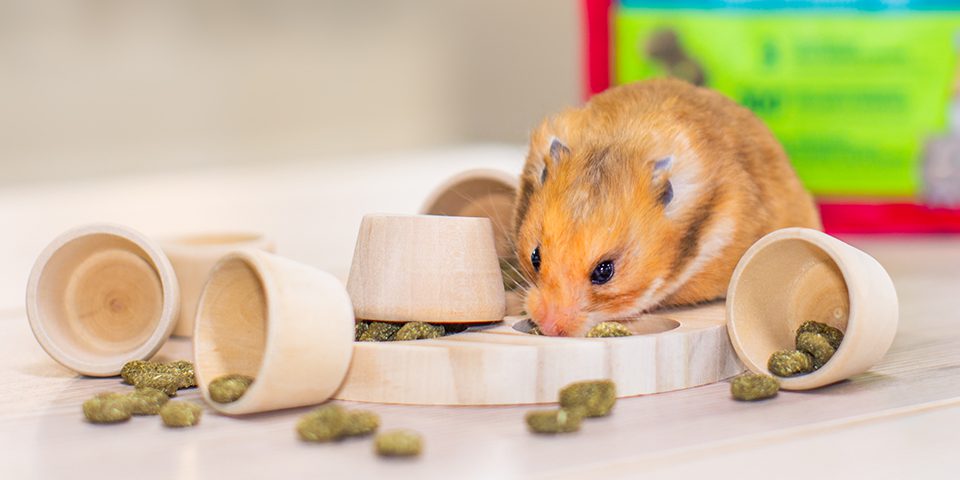
Dietary Requirements
Hamsters and guinea pigs have different dietary requirements. While both guinea pigs and hamsters can enjoy fresh vegetables and occasional fruit, hamsters are omnivores and guinea pigs are herbivores.
In the wild, hamster diets consist of a wide variety of seeds, grains, vegetables, insects, and the occasional fruit. Hamsters like to use their cheek pockets to gather up food to take to their burrows for storage.
Guinea pigs in contrast need diets rich in fiber via unlimited amounts of plant material in the form of a grass hay. They eat large amounts of wild grasses, some vegetables, and a small amount of fruit every now and then. Guinea pigs do not store food like hamsters do. Unlike hamsters, guinea pigs need a source of vitamin C added to their diet because they are unable to synthesize it themselves. In the wild, vitamin C comes from the wide variety of plants that they consume, but in a domesticated setting, vitamin C must be provided by a species-appropriate fortified food.
Because guinea pigs and hamsters have specific dietary needs, hamsters cannot eat guinea pig food, nor can guinea pigs eat hamster food. Oxbow’s fortified food formulas are designed with different species’ dietary needs in mind, and we highly recommend checking out our species-specific hamster food, our young guinea pig food, our adult guinea pig food, or our senior guinea pig food.
Lifespan
Lifespan is important to consider when choosing your pet; you need to be aware of what sort of commitment your family is signing up for. Hamsters typically have a shorter lifespan, ranging from 2 to 3 years when properly cared for. Guinea pigs live longer, averaging between 5 to 7 years with proper nutrition, husbandry, and healthcare.
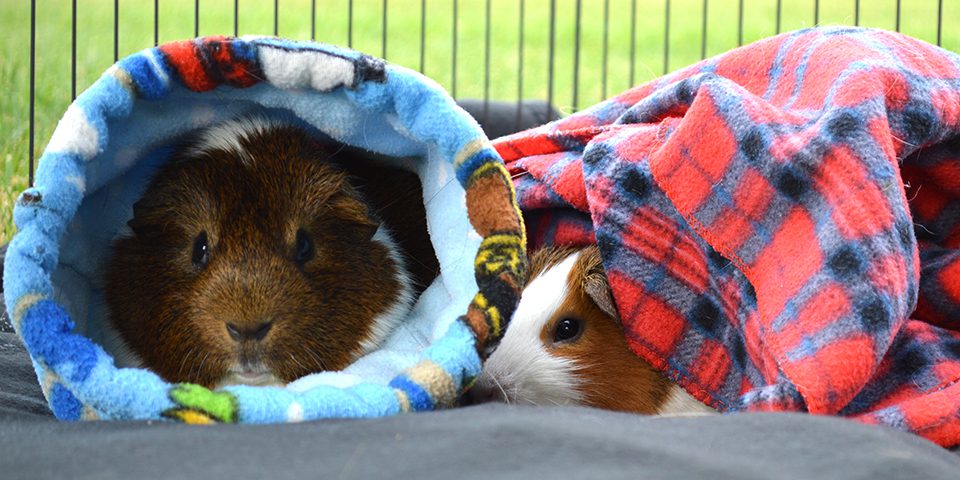
Sociability and Temperament
Guinea pigs and hamsters are polar opposites when it comes to their sociability and temperament!
Hamsters are territorial and can be aggressive, so they prefer a solitary lifestyle. Due to this, they require a lot of enrichment to keep them active and mentally stimulated, since they will not be socializing with other members of their species. Their temperament means that it takes time, work, and patience to get them used to interacting with their humans. They are quick to bite when stressed or threatened. This is one of the reasons why hamsters are generally not recommended for young children.
Guinea pigs are herd animals by nature, so they are extremely social in comparison. They thrive with companionship, and it’s recommended to keep them in a pair or group of the same sex to support their social personalities. Having a friend helps provides mental stimulation and enrichment, encouraging them to be more active. While it does take time to socialize guinea pigs due to their instincts as a prey species, they are a bit quicker to warm up than hamsters. While guinea pigs have a temperament that is more aligned to children, it’s vitally important to remember that children cannot provide proper care for any small animal on their own. Children will need guidance on appropriate care, handling, and interactions with any small companion that is brought home.
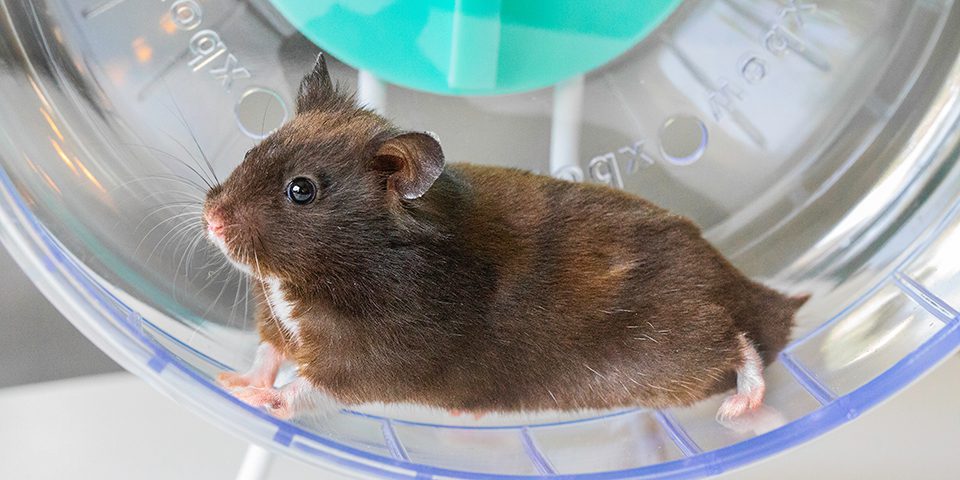
Sleeping Requirements and Activity Level
Hamsters are nocturnal, meaning they are the most active during the night. Because of this keeping a hamster in a bedroom isn’t advised, as they could make enough noise to wake you. They sleep most of the day, so the best times to interact with them are in the morning and evening just before they are settling in for bed or right as they wake up. Hamsters tend to be high energy, so a wheel is a necessary part of the hamster habitat. However, it is important to remember that a wheel alone is not enough enrichment. Providing a large habitat can give your hamster enough space to explore and play. We generally do not recommend that new pet parents allow their hamster to free roam without having a clear understanding of how sneaky hamsters can be when getting into small nooks and crannies in the house, and how agile hamsters are when it comes to climbing. Any small holes should be properly sealed, any climbable materials that you don’t want a hamster to use should be made inaccessible, and any time outside of the habitat should be closely supervised.
Guinea pigs are diurnal animals with crepuscular tendencies, meaning they are awake during the day but are most active at dawn and dusk. Guinea pigs should not be provided wheels or run around balls due to their sensitive spines, but they do need daily exercise. They need plenty of room to run around, and plenty of hideouts to feel safe while exploring their surroundings. You can provide this space either with a large habitat or with daily time in a pet-proofed playpen with plenty of space to roam. Some pet parents may even be able to allow their guinea pig to free roam.
While the enrichment for guinea pigs and hamsters varies due to differences between the two species, both hamsters and guinea pigs have similar instincts to chew, hide, explore, and play. Both species need plenty of time to run, jump, and play to keep them fit and happy.
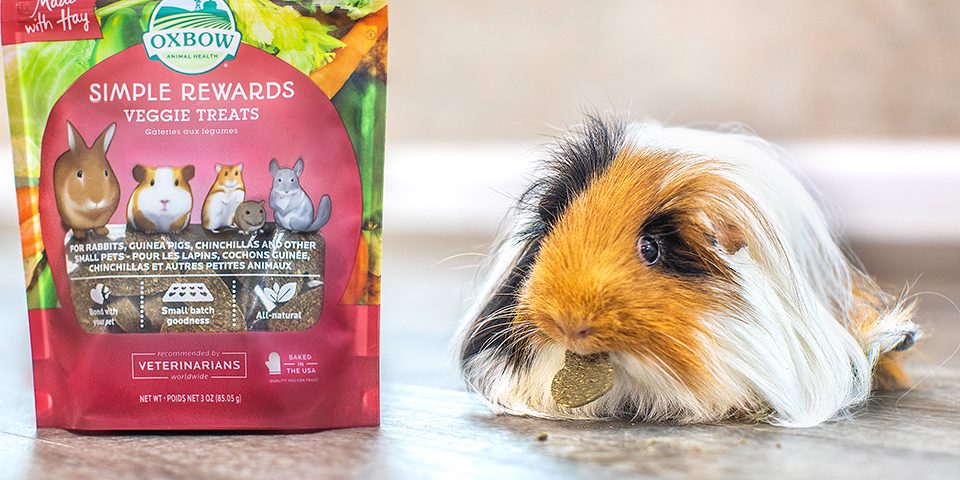
Veterinary Care and Cost
Veterinary costs are an important consideration when adding a pet to your home. It is our responsibility to provide our pets with the best lives that we can, and visits to the vet are just one aspect of being a great pet parent.
There are those out there who don’t think of hamsters or guinea pigs as animals you take to the vet, but this is not the case. Both hamsters and guinea pigs need to see an exotics-savvy veterinarian once or twice a year for preventative care. Keeping up with this can help ensure that you catch potential health issues early on that could be even more costly if ignored.
When talking about veterinary costs, remember that these little guys are considered exotic mammals. It seems odd, since they are easily found in pet stores around the world! Part of why they have this classification, however, is because not every veterinarian has the proper training to see them as patients. Exotic animal veterinary exam fees because of this can be more costly than a dog or cat veterinary visit.
We highly recommend making sure you find a veterinarian for your little one before emergencies arise. Do what you can to establish a relationship with a veterinarian early on. That way, veterinarians have a proper “baseline” for your pet. When your pet may be feeling unwell in the future, this baseline is important in helping identify potential issues and what is considered normal and not normal for your little one’s unique health situation.
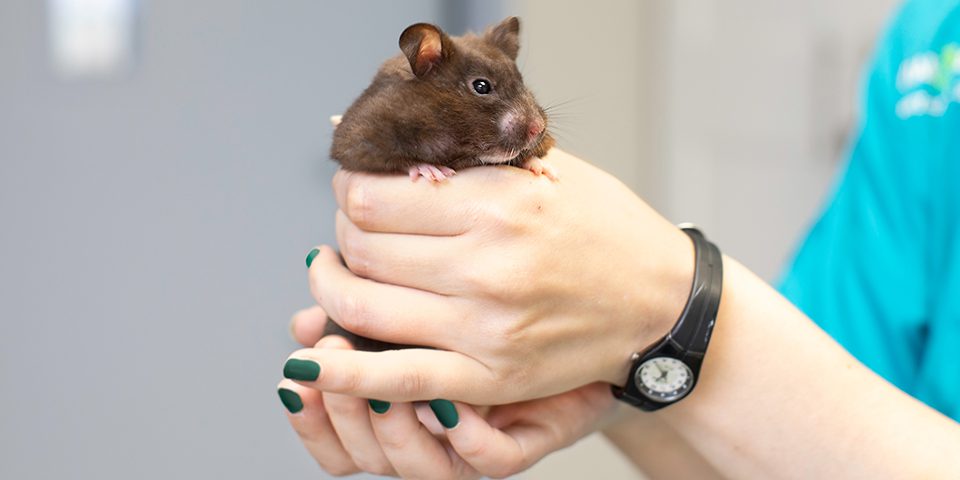
Dental Health
Both guinea pigs and hamsters have open-rooted teeth that will continuously grow throughout their lives. Dental examinations are extremely important for both species, and veterinary intervention may be required if teeth are not being ground down with appropriate chewing motions.
Hamster incisors (the teeth at the front of the mouth) are the only teeth that continuously grow, while all of the teeth belonging to a guinea pig (incisors and molars) continuously grow.
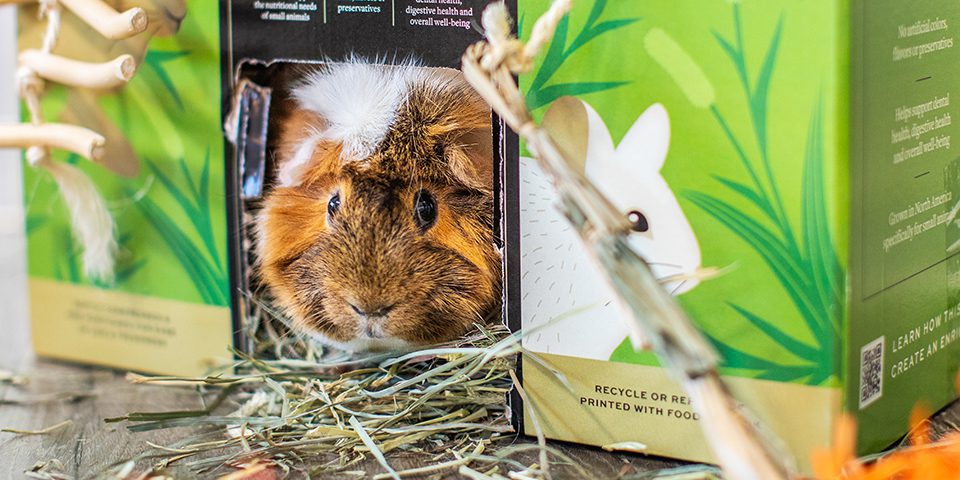
Gastrointestinal Health
If guinea pigs do not consume enough hay, they can go through gastrointestinal stasis episodes that can require emergency intervention. Guinea pigs can also experience loose stools or diarrhea if they experience sudden changes in their daily diet.
While hamsters may not be prone to GI stasis, they do have their own gastrointestinal issues to consider. Hamsters can experience wet tail, a type of diarrhea that can be brought on my sudden changes in diet.
In both hamsters and guinea pigs, the GI issues listed above can be painful and even life-threatening conditions. If you see runny stools or no stools at all, your pet may need emergency veterinary care.
This is why it is important to keep an emergency fund for your pet for unexpected vet visits, if at all possible. Neither hamsters nor guinea pigs should be considered “cheap” pets.
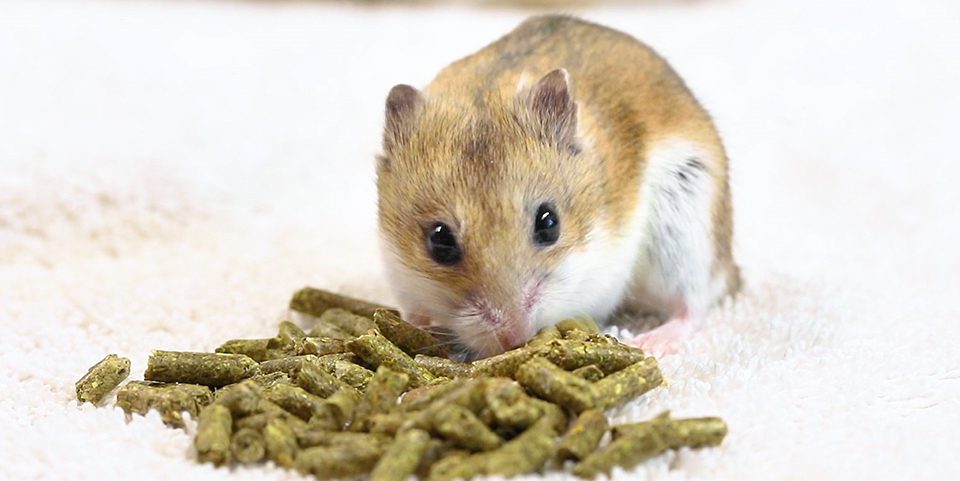
Conclusion
Hamsters and guinea pigs are both wonderful little friends, and while they have some similar needs, they also have some very different requirements to stay happy and healthy. As with any pet, consider each species’ unique traits and requirements to make sure that they will fit into your lifestyle.
